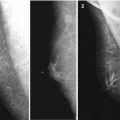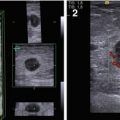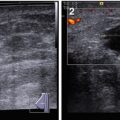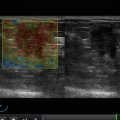Fig. 8.1
Condition after radiation therapy of breast cancer in a man. Photograph
Chemotherapy and hormone therapy of breast carcinoma in men are based entirely on the principles that have proven efficacy in the treatment of the same pathology in women; no definitive data regarding the efficacy of adjuvant chemotherapy in male breast carcinoma exist.
Before the 1970s, orchiectomy was used in many men along with surgery and radiation therapy for breast cancer. Early works devoted to the efficacy of this kind of treatment reported the increase in lifetime in patients with stage IV cancer from 38 to 56 months (Letyagin 2006). Meanwhile, despite the efficacy of hormone therapy, it is not the principal method for palliative therapy. Many men reject this treatment. Additionally, adrenalectomy or hypophysectomy are associated with high risks of complications. Further studies revealed that they do not increase the survival rate. Hence, alternative chemotherapy and hormone therapies that allow avoidance of surgical interventions appear beneficial in such cases. Antiestrogens were tested in male breast cancer. Tamoxifen is quite effective, although it induces more side effects in men than in women (Letyagin 2006). Many authors consider tamoxifen as a gold standard in the treatment of breast cancer in men (Giordano 2005).
Despite the complications that can accompany antiestrogen treatment of breast carcinoma in men, the idea of their use has not been rejected. The benefits of this treatment are significantly greater than the potential side effects. Therefore, antiestrogens should be included in all schemes of adjuvant treatment of hormone receptor-positive male breast cancers (Letyagin 2006; Korde et al. 2010). Clinical experience of endocrine therapy shows that a remission of an average duration of 17 months can be achieved in 69 % of patients (even with metastases in bones in some cases). Remission in men is often reached faster than in women (Makarenko 1998).
Chemotherapy for male breast cancer is not widely discussed. Polychemotherapy with cyclophosphamide, methotrexate, and fluorouracil (5-FU) is used in early stages as adjuvant treatment. The 5-year survival rate in the group with chemotherapy was 80 %. That was significantly higher than in other groups. In other reports, adjuvant chemotherapy in men with breast carcinoma of stage II or operable stage III provided a 5-year survival rate of 85 % (Letyagin 2006; Korde et al. 2010). Hence, initial stages of male breast cancer require adjuvant chemotherapy and hormone therapy. In these cases, the status of axillary lymph nodes, risk of local recurrence, and the hormone receptor status of a tumor should be considered. Adjuvant chemotherapy plus tamoxifen in estrogen receptor-positive cancers and only chemotherapy in estrogen receptor-negative tumors are recommended.
The majority of authors use tamoxifen for hormone therapy in the palliative treatment of breast carcinoma in men. This antiestrogen medicine is tolerated satisfactory. Its efficacy ranges from 25 to 58 % with an average duration of treatment of 7–21 months. It directly depends on the status of hormone receptors. In cases of hormone-negative tumors, the result of hormone therapy is generally significantly worse. Gonadotropin-releasing hormones and their analogs and antiandrogens may exhibit various side effects, such as hot flashes, loss of libido, erectile dysfunction, and gynecomastia. However, these side effects are rare. Other hormonal agents that cause temporary regression of remote metastases include estrogens, progestins, androgens, corticosteroids, and aromatase inhibitors. Optimum regimens of polychemotherapy for the treatment of metastatic breast cancer in men are not defined yet because of the absence of sufficient data for analysis (Giordano 2005; Letyagin 2006).
Stay updated, free articles. Join our Telegram channel

Full access? Get Clinical Tree







